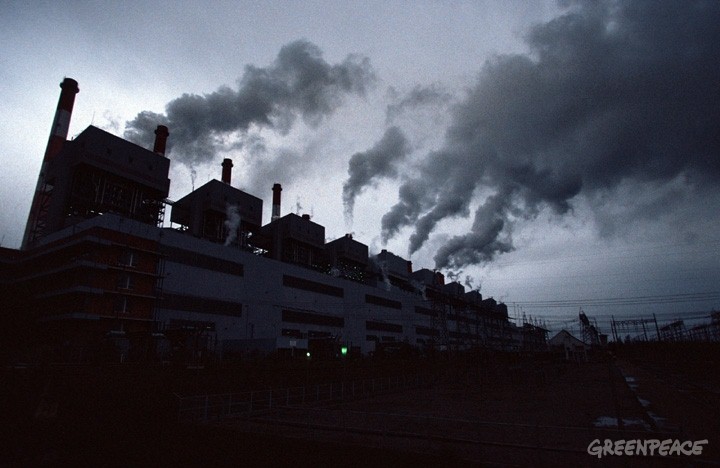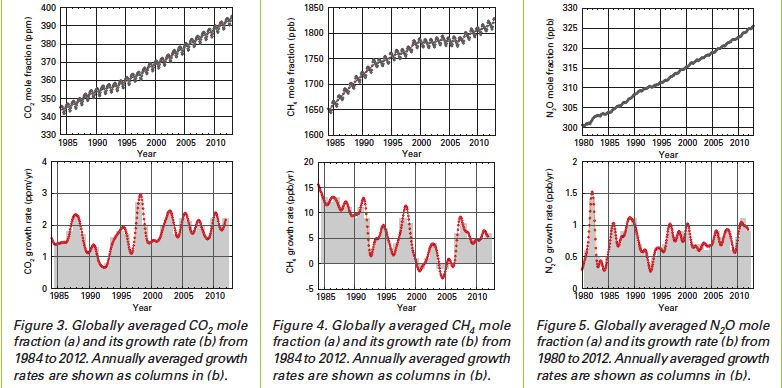Lauren McCauley writes at Commondreams.org
The amount of heat-trapping greenhouse gases in our atmosphere reached a record high in 2012, according to the World Meteorological Organization (WMO), continuing an upward and accelerating trend which, according to report authors, spells "devastating consequences" for the future of the planet.
According to WMO's annual Greenhouse Gas Bulletin, between 1990 and 2012 our atmosphere underwent a 32% increase in 'radiative forcing,' the warming effect on our climate, with carbon dioxide—"mainly from fossil fuel-related emissions"—accounting for 80% of this increase.
These observations, according to WMO Secretary-General Michel Jarraud, "highlight yet again how heat-trapping gases from human activities have upset the natural balance of our atmosphere and are a major contribution to climate change.”
“Time is not on our side,” Jarraud added, indicating the perils ahead if the trend is not halted or emissions reduced.
The Bulletin writes:
[O]n the global scale, the amount of CO2 in the atmosphere reached 393.1 parts per million in 2012, or 141% of the pre-industrial level of 278 parts per million. The amount of CO2 in the atmosphere increased 2.2 parts per million from 2011 to 2012, which is above the average 2.02 parts per million per year for the past 10 years, showing an accelerating trend.
The Greenhouse Gas Bulletin reports on concentrations of greenhouse gases such as carbon dioxide (CO2), methane (CH4) and nitrous oxide (N2O) that remain in the atmosphere after a percentage of the gases are absorbed into the biosphere and oceans.
In addition to the dramatic increase in atmospheric CO2, atmospheric methane reached a new high of about 1819 parts per billion (ppb) in 2012, or 260% of the pre-industrial level, due to increased emissions from human activities. Sixty percent of atmospheric methane comes from activities such as cattle breeding, rice agriculture, fossil fuel exploitation, landfills and biomass burning.
The report also found that the atmospheric concentration of nitrous oxide in 2012 was about 325.1 parts per billion, which is 0.9 parts per billion above the previous year and 120% of the pre-industrial level. Forty percent of atmospheric nitrous oxide comes from human activities such as biomass burning, fertilizer use, and various industrial processes.
Nitrous oxide, which is related to the destruction of the stratospheric ozone layer, has an impact on the climate 298 times greater than equal emissions of carbon dioxide over a 100-year period.
Citing the Intergovernmental Panel on Climate Change's (IPCC) latest Assessment Report, Jarraud notes that if we continue with ‘business as usual,’ global average temperatures may rise as much as 4.6 degrees higher than pre-industrial levels by the end of the century. "This would have devastating consequences,” he notes.
"Our climate is changing, our weather is more extreme, ice sheets and glaciers are melting and sea levels are rising,” adds Mr. Jarraud. “Limiting climate change will require large and sustained reductions of greenhouse gas emissions. We need to act now, otherwise we will jeopardize the future of our children, grandchildren and many future generations.”
(Image: WMO)
_____________________





 © 2025 All Rights Reserved
© 2025 All Rights Reserved